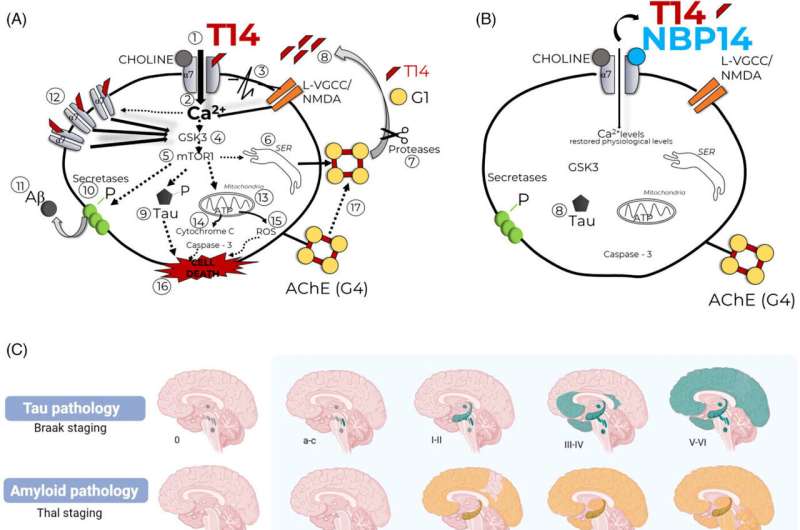This article has been reviewed according to Science X's editorial process and policies. Editors have highlighted the following attributes while ensuring the content's credibility:
fact-checked
peer-reviewed publication
proofread
Researchers examine evidence for a novel neuronal mechanism driving Alzheimer's disease

An international team of clinicians and neuroscientists have published a new perspective on the process of neurodegeneration. Their findings review evidence for a mechanism upstream of amyloid including the key neurochemical driving this process.
The paper, published in Alzheimer's & Dementia, focuses on a selective group of neurons ("the isodendritic core"). These cells have a different provenance from neurons in the rest of the brain and have previously been identified as primarily vulnerable in Alzheimer's disease (AD).
The authors acknowledge that amyloid is a significant factor in AD once it has progressed, but note that it is not present in these neurons in the early stages. If damage occurs to these vulnerable neurons in adulthood, these neurons will respond by mobilizing a retaliatory mechanism. This mechanism normally promotes growth of neurons in embryos and early life but in adulthood is detrimental.
The review describes how the pivotal molecule that drives this process, is a bioactive 14-mer peptide, T14, that selectively activates a single target receptor. In the mature brain instead of restoring normal function, T14 leads to the death of neurons and initiates an adverse snowball effect that gains momentum over time.
The isodendritic core neurons, found deep in the brain, are responsible for arousal and sleep/wake cycles and are not directly related to higher functions such as memory. Hence, the process of degeneration can continue without obvious symptoms until the damage spreads to areas that underlie cognition.
The explanation offered in this article may account for the long-time lag of 10 to 20 years from onset of neuronal loss to appearance of cognitive impairment.
The review reports how T14 can be detected at a very early stage of AD and therefore could be a pre-symptomatic indication that neurodegeneration had started and, as such, could be developed as a biomarker.
In addition, the authors describe how a cyclated version, NBP14, can act as a blocker of T14. NBP14 has been shown to prevent memory dysfunction in a mouse model of AD and its mechanism of action has been demonstrated in a variety of studies including in post mortem human brain tissue. As such, NBP14 could eventually inspire a new therapeutic strategy.
More information: Sara Garcia Ratés et al, Evidence for a novel neuronal mechanism driving Alzheimer's disease, upstream of amyloid, Alzheimer's & Dementia (2024). DOI: 10.1002/alz.13869




















